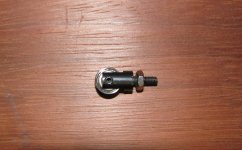atomarc
Diamond
- Joined
- Mar 16, 2009
- Location
- Eureka, CA
I have 36 inches of 1 1/2" square bar that has features that must be turned in the lathe. I screwed the first victim up and don't want to ruin my second attempt.
I dialed the first attempt in using the 4 jaw and a DTI but must have missed the mark a few thou's.
On this second attempt I'm going to center drill each end in my mill, finding dead center with my trusty Haimer. I then plan on installing the bar in the lathe between centers and using a dog, turning the features.
Am I setting myself up for complete failure..sure seems like it would work, and bypass all that fussing around with the 4 jaw and indicators.
What do the pro's think?
EDIT. Title is certainly a spelling disaster...sorry!
Stuart
I dialed the first attempt in using the 4 jaw and a DTI but must have missed the mark a few thou's.
On this second attempt I'm going to center drill each end in my mill, finding dead center with my trusty Haimer. I then plan on installing the bar in the lathe between centers and using a dog, turning the features.
Am I setting myself up for complete failure..sure seems like it would work, and bypass all that fussing around with the 4 jaw and indicators.
What do the pro's think?
EDIT. Title is certainly a spelling disaster...sorry!
Stuart




